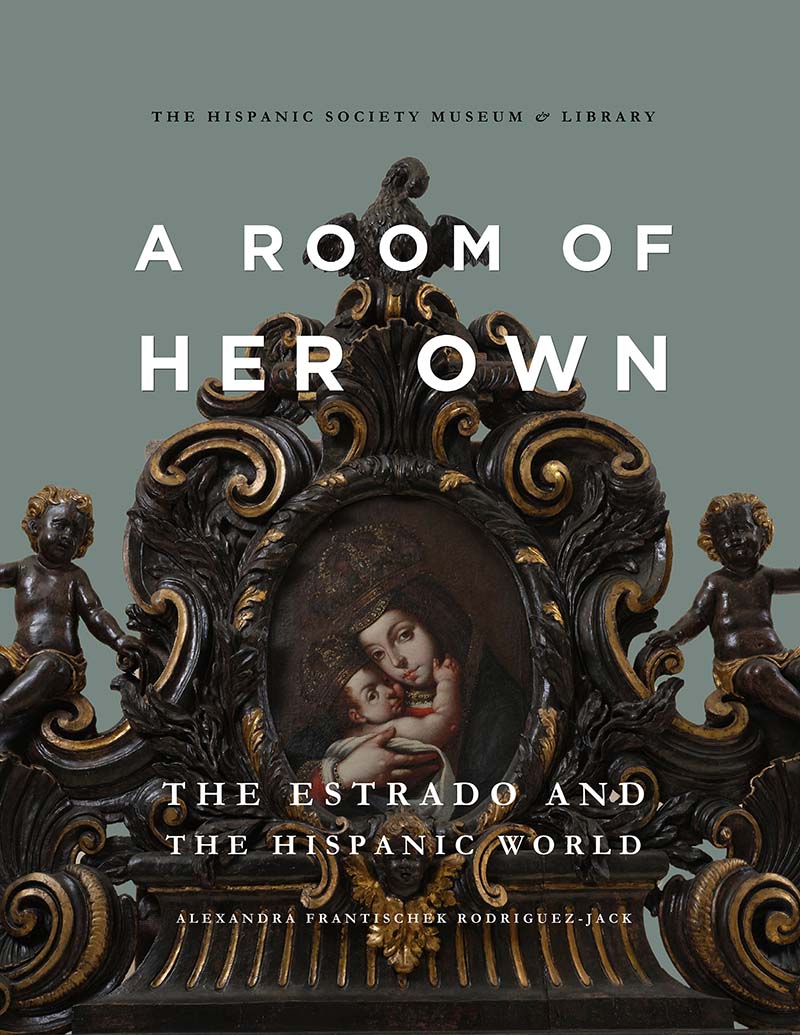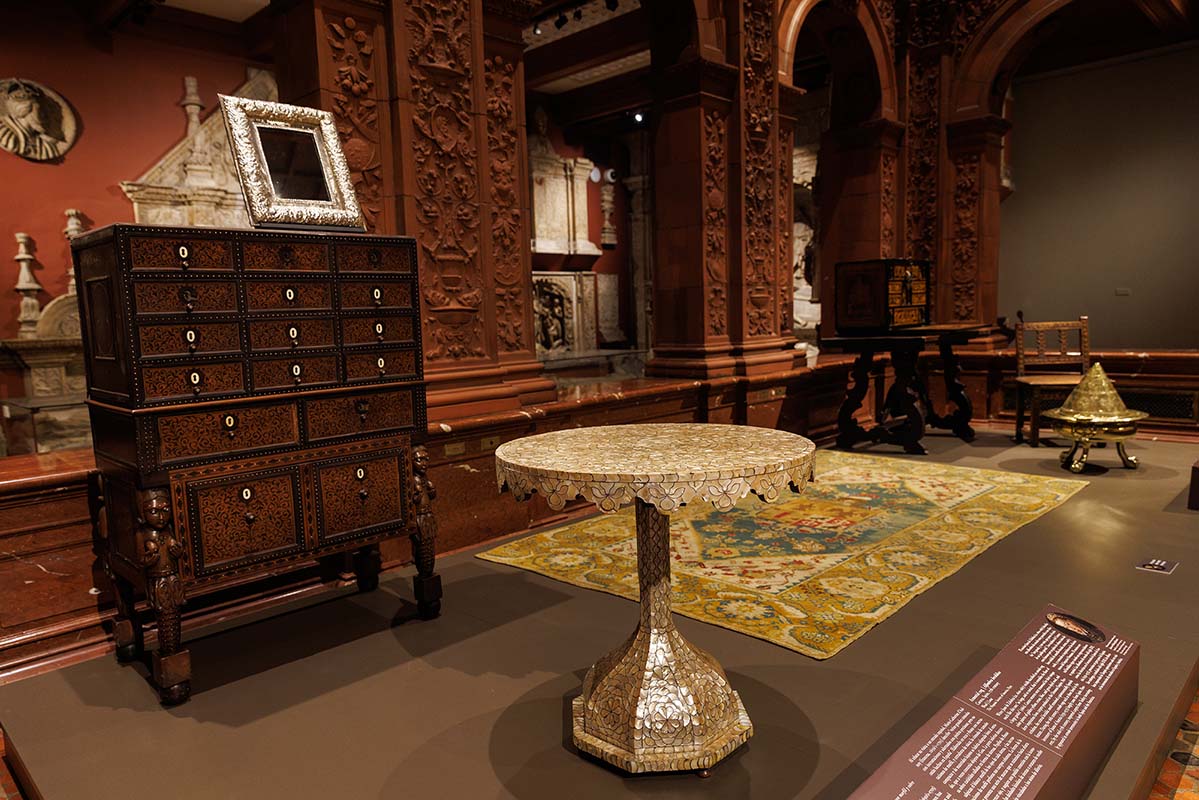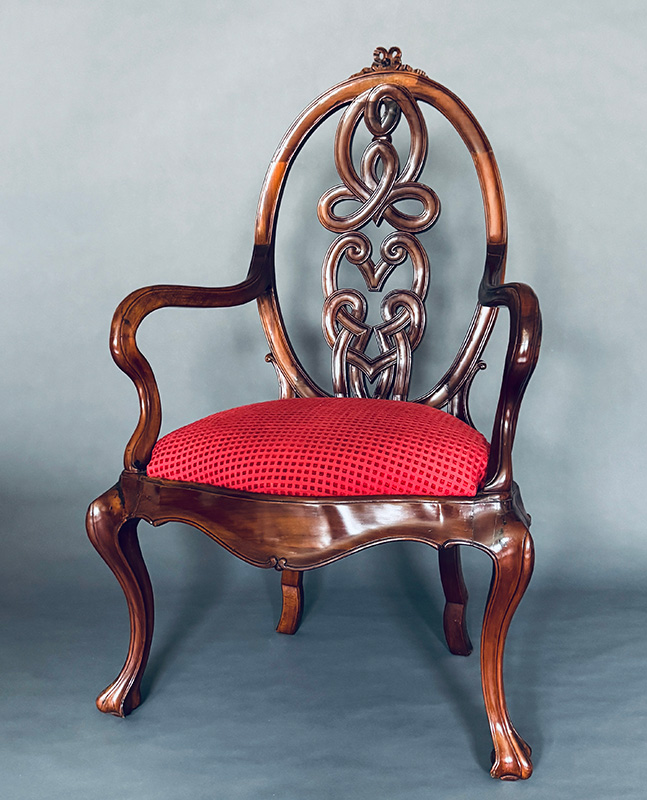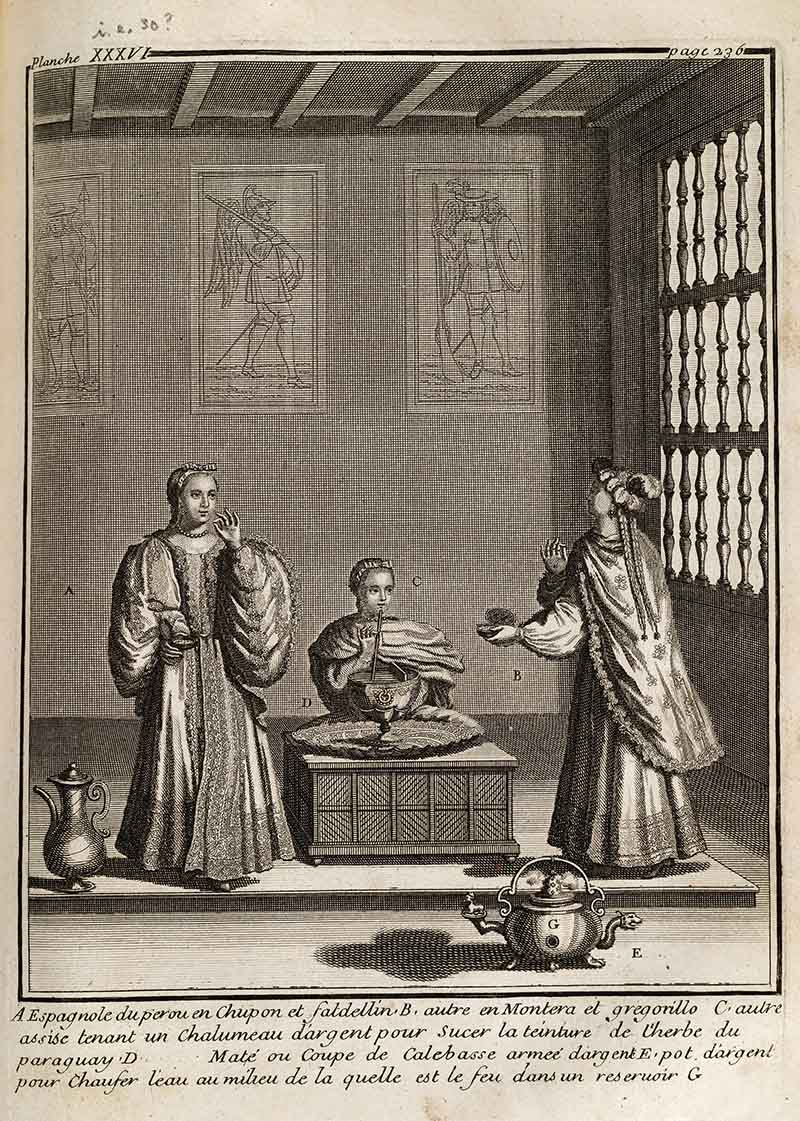A Room of Her Own: New Book Explores the Estrado
Click on images to enlarge them and view captions.
by Alexandra Frantischek Rodriguez-Jack
Made possible through a generous Publishing Grant from the Decorative Arts Trust, the book A Room of Her Own: The Estrado and the Hispanic World brings new scholarship to this overlooked subject. Accompanying a groundbreaking exhibition at the Hispanic Society Museum & Library in New York City (figure 1), the book explores the estrado, a long-forgotten emblem of opulence and mystery, which once played a crucial role in the social and domestic lives of women in the Hispanic world.
Although the estrado has historically received scant scholarly attention, Jorge Rivas Pérez’s article “The Material World of the Spanish Colonial Estrado” in the summer 2023 issue of The Magazine of the Decorative Arts Trust developed from his extensive research and expertise on the arts of Viceregal Spain. Building on Pérez’s work and the limited existing scholarship, A Room of Her Own draws from an array of primary sources to obtain a broader historical perspective, offering the most comprehensive and detailed exploration of the estrado to date.
Emerging in the late Middle Ages in the elite residences of Moorish al-Andalus in the southern Iberian Peninsula, this remarkable space evolved into a luxurious and gendered symbol of status, where women entertained guests and displayed prized possessions from across the globe. Over centuries, the estrado became an essential element of upper-class homes in Spain and its overseas viceroyalties, before gradually fading into obscurity in the 19th century.
Initially characterized by a traditional seating arrangement of a raised platform covered with carpets and cushions (similar to those found in Islamic cultures), the estrado was a room or area within a room where women engaged in elaborate social rituals. More than just a gendered reception area, however, the estrado represents a microcosm of wealth and cultural exchange. As Spain expanded its empire, objects from Europe, the Americas, and Asia found their way into these spaces, reflecting global trade and colonial power dynamics. (See the article on pages 26-27 for more information about transpacific trade.)
Despite its association with domestic confinement, the estrado offered women a unique space of autonomy within the home. Probate inventories and dowry records reveal the extraordinary wealth concentrated in these rooms, filled with exquisite textiles, ceramics, precious metals, and finely crafted furniture (figure 2). The presence of these goods not only signified affluence but also reinforced the estrado’s role as a curated showcase of personal and familial prestige.
Contemporary literature often critiqued the estrado, portraying it as a feminine realm of luxury and frivolity. In the second part of Miguel de Cervantes’s Don Quixote (1615), for example, it is referenced five times—always as a sign of wealth. Spanish writer Juan de Zabaleta (c. 1600–67) scorned the exquisite contents found in the estrado, describing them with a tone of reverence while condemning them as wasteful and impractical. This paradoxical sentiment was echoed in male-authored 18th-century conduct manuals and social commentaries that sought to restrict women’s behavior by condemning their materialism and vanity. Nevertheless, the estrado remained a coveted space of comfort, sociability, and self-expression.
As Spain’s influence extended across the Atlantic, elite women in the viceroyalties of New Spain and Peru embraced the practice. Women of diverse backgrounds, including those of Indigenous and African descent, adapted the estrado to their own cultural contexts, incorporating local materials and traditions. In early-17th-century Peru, for instance, Incan noblewomen integrated Spanish-style estrados into their homes, blending new and indigenous customs to signal their privileged status. The space also served as an educational setting where mothers taught their daughters music, embroidery, and etiquette—skills essential for navigating upper-class society.
The estrado was not exclusive to the elite. As economic mobility increased, members of the aspiring middle class sought to recreate this luxurious setting with more modest furnishings. In rural areas, women crafted simpler versions using woven textiles and locally sourced materials, demonstrating the adaptability of the estrado across different social strata. In some regions, specific customs emerged and persisted well into the 19th century, such as the practice of serving yerba mate (figure 3), a caffeinated beverage derived from the leaves of a South American tree, in the estrado.
By the mid-18th century, shifts in taste and political reform began to undermine the prominence of the estrado. The Bourbon monarchy introduced Enlightenment ideals that favored French and English furniture styles, gradually replacing the traditional estrado with sofas and settees. Additionally, the push for modernization in Spain and its American territories led to changes in domestic interiors, favoring more modern, Europeanized layouts. As independence movements swept through Latin America in the early 19th century, the estrado faded from domestic life, leaving behind only remnants in historical records and surviving furnishings.
Despite its disappearance, the estrado remains a significant yet understudied aspect of decorative arts, women’s spaces, and the history of the Spanish-speaking world. This was more than just an ornate domestic space—it was a stage for cultural exchange, female agency, and social ritual. This publication seeks to reconstruct the estrado’s forgotten splendor, reuniting its objects and narratives to offer a deeper understanding of its historical significance. By examining these spaces through material culture, literature, archival records, and legal documents, we uncover a world where women wielded influence within the confines of their homes, challenging traditional notions of passivity and seclusion. In doing so, we bring the estrado back into the spotlight, restoring its rightful place in the history of decorative arts.
Alexandra Frantischek Rodriguez-Jack curated the Hispanic Society Museum & Library’s exhibition A Room of Her Own: The Estrado and the Hispanic World and authored and designed the accompanying catalogue. Decorative Arts Trust members at the Benefactor level and above will receive a copy as part of their annual benefits. A Virtual Tour of the exhibition is available at decorativeartstrust.org/hispanic-society-virtual-tour.
A print version of this article was published in The Magazine of the Decorative Arts Trust, one of our most popular member benefits. Join today!




